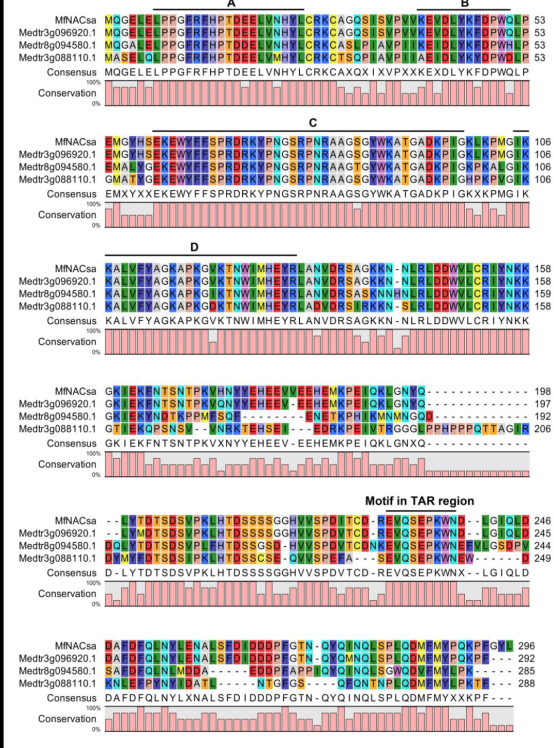

锚定在细胞膜上的转录因子如何在植物面对干旱胁迫时发挥抗旱作用?这一众多科学家感兴趣的问题,得到了部分解答。12日,科技日报记者从中国农业大学了解到,该校农业生物技术国家重点实验室王涛教授研究团队在植物应答干旱胁迫的分子机制领域取得突破。相关论文于7月6日在线发表在国际植物学顶级学术期刊《植物细胞》上。
干旱胁迫严重影响植物生长发育和作物产量。不过,植物也在长期进化过程中,形成了适应或抵抗干旱胁迫的复杂调控机制。有研究发现,当干旱来临,植物细胞能感知到干旱的信号,它会让转录因子在细胞核中启动抗旱基因的表达,来抵抗干旱对自己的生存压力。
课题组经过多年研究,发现了一种新型的NAC转录因子。NAC转录因子为植物特有,它涉及多个生长发育和胁迫应答过程,功能多样。课题组发现的这一NAC转录因子,其本身结构并不能让它“定位”在细胞膜上。但是,在被一种软脂酸(十六烷酸)修饰后,它能通过疏水作用力锚定在细胞膜上。
那么,这种转录因子是怎么去往细胞核“搞事情”的呢?关键之一在于一类特殊的硫脂酶。王涛告诉科技日报记者,干旱时这种硫脂酶的蛋白质表达量会快速增加。“干旱到来时,硫脂酶蛋白能将转录因子NAC和软脂酸之间的硫酯键切开,这样一来,释放了的转录因子就进入了细胞核。之后,它启动调节细胞内氧化还原平衡的一种关键物质表达,帮助植物抗旱。”
王涛表示,这种植物抵抗干旱胁迫的方式在黄花苜蓿、截形苜蓿、大豆、拟南芥等植物中存在,是一种普遍现象。它揭示了一条植物应答干旱胁迫的新路径,为植物抗旱育种提供了新思路。(来源:科技日报 张盖伦)
A lipid-anchored NAC transcription factor translocates into nucleus to activate GlyI gene expression involved in drought stress
Abstract The plant-specific NAC (NAM, ATAF½ and CUC2) transcription factors (TFs) play a vital role in response to drought stress. Here, we report a lipid-anchored NACsa TF in Medicago falcata. MfNACsa is an essential regulator of plant tolerance to drought stress, resulting in the differential expression of genes involved in oxidation-reduction, lipid transport and localization. MfNACsa is associated with membranes under unstressed conditions, and more specifically, it is targeted to the plasma membrane through S-palmitoylation. However, a Cys26 to Ser mutation or inhibition of S-palmitoylation results in MfNACsa retention in the endoplasmic reticulum/Golgi. Under drought stress, MfNACsa translocates to the nucleus through de-S-palmitoylation mediated by the thioesterase MtAPT1, as co-expression of APT1 results in a nuclear translocation of MfNACsa, whereas mutation of the catalytic site of APT1 results in co-localization with and membrane retention of MfNACsa. Specifically, the nuclear MfNACsa binds the glyoxalase I (MtGlyl) promoter under drought stress, resulting in drought tolerance by maintaining the glutathione pool in a reduced state, which are dependent on the APT1-NACsa regulatory module. Our findings reveal a novel mechanism for the nuclear translocation of an S-palmitoylated NAC in response to stress.
原文链接:http://www.plantcell.org/content/plantcell/early/2017/07/06/tpc.17.00044.full.pdf



